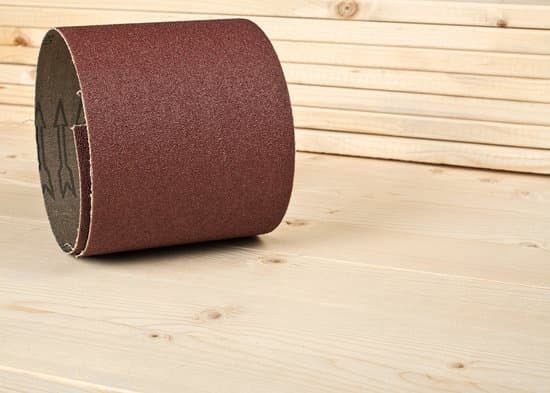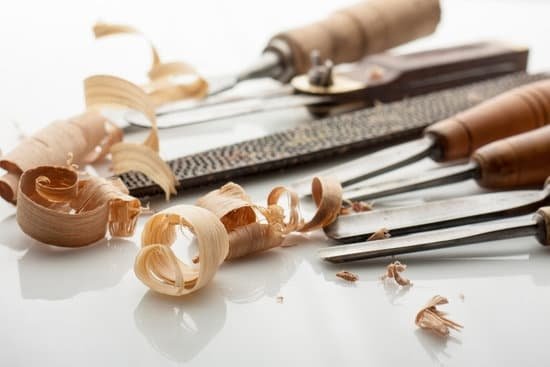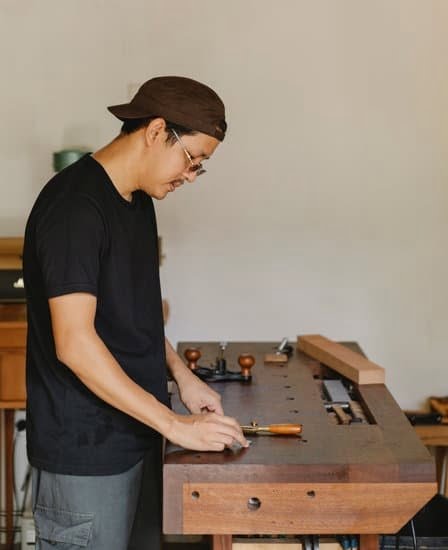Are you tired of sifting through a cluttered and disorganized workshop just to find the right tool for your woodworking projects? A woodworking tool cabinet can be the solution to your problem. In this article, we will guide you on how to build a woodworking tool cabinet that not only keeps your tools organized but also adds a professional and efficient touch to your workspace.
Before diving into the construction process, it’s important to understand why a woodworking tool cabinet is essential. Not only does it keep your tools neatly organized and easily accessible, but it also ensures that they are protected from damage and wear.
With proper planning and design, gathering the necessary materials and tools, precise cutting and measuring, detailed assembly instructions, storage solutions, finishing touches, as well as additional tips and tricks – this article will provide a comprehensive guide for anyone looking to build their own woodworking tool cabinet.
By following the step-by-step instructions provided in this article, readers can successfully construct a functional and professional-looking woodworking tool cabinet tailored to their needs. So whether you’re an experienced woodworker or a novice DIY enthusiast, building a custom tool cabinet can significantly enhance your workshop organization while adding a touch of craftsmanship to your working space.
Planning and Design
When it comes to building a woodworking tool cabinet, proper planning and design are crucial to ensure the finished product meets all your needs. Before starting the build, there are several necessary considerations to take into account.
Space and Functionality
The first consideration in planning and designing your woodworking tool cabinet is to assess the available space where the cabinet will be placed. Measure the area carefully to determine the dimensions of the cabinet. Consider not only the size of your tools but also how you want them organized within the cabinet for easy accessibility.
Material Selection
Another important factor to consider is the type of materials you will use for building your woodworking tool cabinet. Depending on your budget and preference, you may choose between plywood, hardwood, or even reclaimed wood. Additionally, consider whether you want to incorporate glass doors or drawers for added functionality.
Design Elements
Finally, think about any additional design elements you want to incorporate into your woodworking tool cabinet. This could include features such as built-in lighting, a work surface on top of the cabinet, or specialized storage compartments for specific tools. Taking these factors into account during the planning stage will result in a more customized and functional woodworking tool cabinet that meets all your needs.
By carefully considering these aspects before starting the build, you can ensure that your woodworking tool cabinet will be practical, efficient, and tailored specifically to your unique requirements.
Gathering Materials
Materials
Before starting the build of a woodworking tool cabinet, it is essential to gather all the necessary materials. The primary material required for this project is wood. Plywood is often a popular choice due to its strength and affordability, but solid wood can also be used for a more traditional look.
Additionally, screws, wood glue, hinges, drawer slides, and other hardware will be needed for assembly. It is important to choose high-quality materials to ensure the durability and longevity of the tool cabinet.
Tools
In addition to materials, having the right tools for the job is crucial in building a woodworking tool cabinet. Some essential tools include a table saw or circular saw for cutting the wood, a drill with various drill bits for making holes and securing screws, clamps for holding pieces together during assembly, and measuring tools such as a tape measure and square for accurate cuts and dimensions.
Safety equipment such as goggles and ear protection should also be used when working with power tools.
Additional Supplies
Aside from wood and tools, there are some additional supplies that will be needed during the construction of a woodworking tool cabinet. Sandpaper or a sander will be necessary for smoothing out rough edges and surfaces before finishing. Stain or paint can also be used to add color or enhance the natural beauty of the wood.
Varnish or polyurethane will provide protection and a polished look to the finished cabinet. Lastly, storage solutions such as drawer organizers or pegboard may be included depending on personal preferences and needs for organizing tools within the cabinet.
By gathering all these materials, tools, and supplies in advance, one can streamline the process of building their own woodworking tool cabinet while ensuring they have everything they need to complete the project successfully.
Cutting and Measuring
Once you have planned and designed your woodworking tool cabinet, the next step is to start cutting and measuring the wood for the project. This is a crucial part of the process as accurate measurements and precise cuts will ensure that your cabinet comes together seamlessly. Here is a step-by-step guide on how to cut and measure the wood for your woodworking tool cabinet:
1. Measure Twice, Cut Once: Before making any cuts, carefully measure all the pieces of wood you will need for your cabinet. Use a reliable tape measure and make sure to double-check your measurements to avoid mistakes.
2. Use Proper Tools: Invest in high-quality saws such as a table saw, circular saw, or miter saw for accurate and clean cuts. Having the right tools will make the cutting process much easier and more efficient.
3. Cutting the Pieces: Once you have double-checked your measurements and secured the wood, carefully make your cuts according to your plan. Take your time with each cut to ensure precision and accuracy.
4. Label Each Piece: As you cut each piece of wood, be sure to label them according to their intended use in the cabinet. This will help you stay organized during assembly and prevent any confusion later on.
By following these steps, you can ensure that the wood for your woodworking tool cabinet is accurately measured and cut, setting the stage for a successful build.
Next, we’ll move on to assembly where we will put all these precisely measured pieces together into a fully functional woodworking tool cabinet.
Assembly
Once you have all your pieces cut and ready, it’s time to begin assembling your woodworking tool cabinet. Follow these step-by-step instructions to ensure a sturdy and well-constructed final product:
1. Lay out the pieces: Start by laying out all the pieces of your cabinet in the order they will be assembled. This will help you visualize the final product and ensure that you have all the necessary components.
2. Begin with the frame: Start by assembling the frame of the cabinet, using wood glue and screws to secure each joint. Make sure the corners are square and use clamps to hold everything in place while the glue dries.
3. Add the shelves and dividers: Once the frame is assembled, it’s time to add the shelves and dividers. Use a level to make sure everything is straight and even, and secure them in place with glue and screws.
4. Install the back panel: Once all the internal components are in place, attach the back panel of the cabinet. This will provide extra stability to your cabinet and enclose all of your tools for safekeeping.
5. Attach doors or drawers: If your design includes doors or drawers, now is the time to install them. Make sure they open and close smoothly, and add any hardware such as knobs or pulls for a professional finish.
By following these steps carefully, you can ensure that your woodworking tool cabinet is sturdy and well-constructed, providing safe storage for your valuable tools.
It’s important to take into account that a good assembly relies on precise cuts and measurements during earlier stages of building this project complying an efficient finish.
Adding Storage Solutions
When building a woodworking tool cabinet, one of the most important considerations is the storage solutions for your tools and accessories. The right storage options will not only keep your workspace organized but also ensure that your tools are easily accessible when needed. There are several storage solutions to consider, including drawers, shelves, pegboards, and custom tool holders.
Drawers are an excellent choice for storing smaller tools such as chisels, measuring tapes, and screwdrivers. They provide easy access to your tools while keeping them neatly organized and protected from dust. Shelves are ideal for larger tools such as hand saws, power drills, and routers. Adjustable shelves can accommodate different tool sizes and allow for flexibility in organization.
Pegboards are a versatile storage solution that allows you to hang various tools using hooks or pegs. This option is great for frequently used tools as it provides quick and easy access. Custom tool holders, such as tool trays or racks, can be designed specifically for certain tools to keep them organized and readily available.
In addition to these standard storage options, consider incorporating built-in features like magnetic strips for metal tools or removable bins for hardware and small parts. By carefully planning the storage solutions in your woodworking tool cabinet, you can create a functional and efficient workspace that meets your specific needs.
| Storage Solution | Best For |
|---|---|
| Drawers | Smaller hand tools (chisels, screwdrivers) |
| Shelves | Larger power tools (hand saws, drills) |
| Pegboards | Frequently used tools (hammers, pliers) |
Finishing Touches
Once you have completed the assembly of your woodworking tool cabinet, it’s time to focus on the finishing touches to give it a professional look. Sanding is an essential step to ensure that the entire surface is smooth and free from any rough spots or splinters.
Start with a coarse-grit sandpaper to remove any imperfections, then gradually work your way up to a finer-grit sandpaper for a polished finish. Be sure to sand in the direction of the wood grain to avoid causing any damage.
After sanding, it’s time to decide on the stain or varnish you want to use for your woodworking tool cabinet. Staining will enhance the natural beauty of the wood, while varnishing will provide additional protection against wear and tear. Whichever option you choose, be sure to apply it evenly and consistently across the entire surface. It’s important to allow each coat to dry completely before applying another one for a smooth and professional finish.
To add an extra touch of professionalism to your woodworking tool cabinet, consider adding some decorative elements such as handles or knobs. These small details can make a big difference in the overall aesthetic of your cabinet. Additionally, you may want to consider adding labels or markings on each storage compartment for easy organization and accessibility of your tools. By paying attention to these finishing touches, you can take your homemade woodworking tool cabinet to the next level.
| Finishing Tip | Description |
|---|---|
| Sanding | Sand in the direction of the wood grain for best results |
| Staining/Varnishing | Apply even coats and allow each layer to dry completely before adding another one |
| Decorative Elements | Add handles, knobs or labels for added professionalism and functionality |
Tips and Tricks
Building a woodworking tool cabinet requires careful planning and skillful execution. Here are some additional tips and tricks to ensure a successful build of your own woodworking tool cabinet.
First, it’s essential to prioritize functionality when designing your woodworking tool cabinet. Consider the types of tools and accessories you have, as well as how often you use them. This will help you determine the layout and storage solutions that will work best for your needs. Additionally, think about any future tool purchases and how they can be accommodated in the design of the cabinet.
Another important aspect to consider is the durability of the materials used. Opt for high-quality, sturdy wood that can withstand the weight of your tools without compromising the stability of the cabinet. This will ensure that your woodworking tool cabinet remains reliable and long-lasting.
When assembling your woodworking tool cabinet, take extra care to reinforce joints and connections to guarantee a sturdy construction. Adding extra support with reinforcing brackets or using wood glue in addition to screws can help prevent wobbling or sagging over time. Paying attention to these details during assembly will contribute to a solid and dependable finished product.
In addition, don’t forget about safety measures such as adding locks or latches to keep your tools secure, especially if you have small children around. Proper ventilation is also crucial if storing chemicals or solvents in the cabinet. Taking these precautions will not only protect your tools but also provide peace of mind. These tips and tricks can help ensure that your woodworking tool cabinet serves its purpose effectively while enhancing your woodworking space with organization and efficiency.
Conclusion
In conclusion, building a woodworking tool cabinet is a rewarding and practical project for any woodworker. The importance of having a dedicated space to organize and store tools cannot be overstated, and by following the steps outlined in this guide, anyone can create a customized cabinet to suit their needs.
By carefully planning and designing the cabinet, gathering the right materials and tools, and following the step-by-step instructions for cutting, measuring, and assembly, woodworkers of all skill levels can successfully build their own woodworking tool cabinet. Whether it’s adding storage solutions or putting on the finishing touches with sanding, staining, and varnishing, every detail contributes to achieving a professional result.
We hope that this guide has inspired you to take on the challenge of building your own woodworking tool cabinet. With dedication and patience, anyone can create a functional and visually appealing cabinet that will serve as a valuable addition to their workshop. So don’t hesitate to roll up your sleeves, gather your tools and materials, and embark on this satisfying woodworking project.
Frequently Asked Questions
What Woodworking Tools Do I Need to Make Cabinets?
Woodworking tools needed to make cabinets include a table saw, compound miter saw, router, drill/driver, hand plane, chisels, combination square, clamps, and measuring tape. These tools are essential for cutting and shaping the wood, as well as for assembling the pieces together to create cabinets.
How Should a Toolbox Be Organized?
A toolbox should be organized in a way that makes it easy to find and access the necessary tools. This can be achieved by grouping similar tools together and using dividers or organizers within the toolbox.
It’s also important to keep frequently used tools within easy reach and to label or color code different sections of the toolbox for quick identification.
Which Hard Wood Is Used for Cabinet Making?
Hardwoods commonly used for cabinet making include oak, cherry, maple, birch, walnut, and hickory. These woods are prized for their durability, strength, and attractive grain patterns. Each type of hardwood has its own unique characteristics that can contribute to the overall look and quality of the cabinets being made.

Hi everyone! I’m a woodworker and blogger, and this is my woodworking blog. In my blog, I share tips and tricks for woodworkers of all skill levels, as well as project ideas that you can try yourself.





